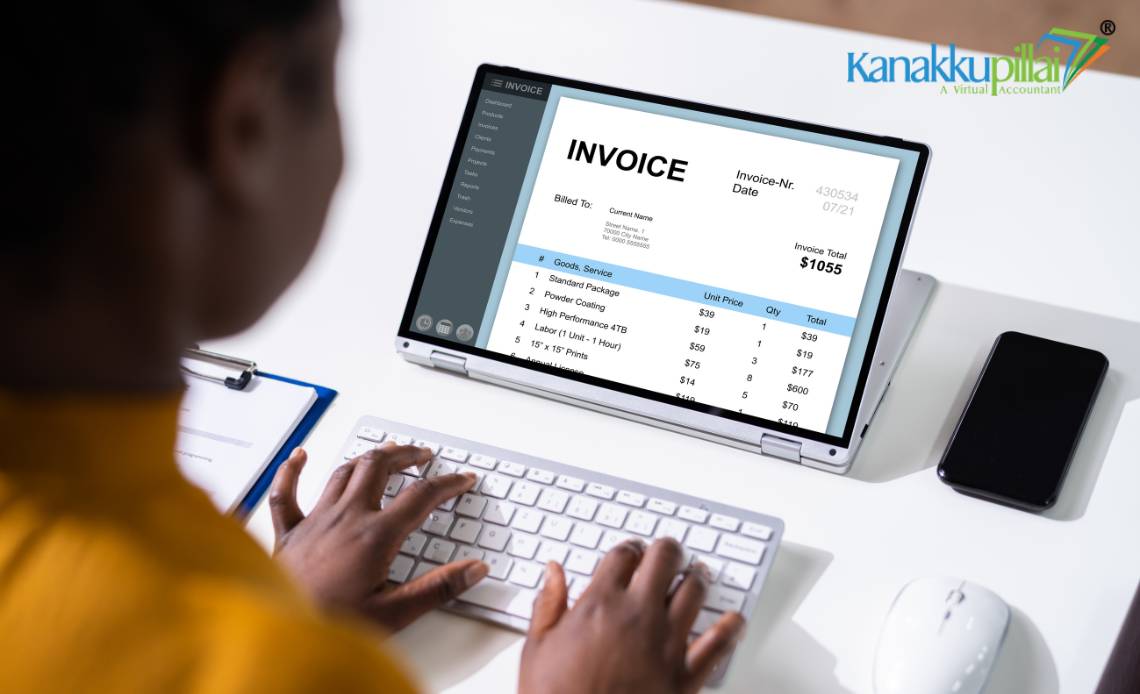GST compliance is an integral part of running a business in the country. GST is a huge and significant part of Taxation implementation, whether you are a small enterprise or a large-scale output. Timely and accurate GST invoicing can help you maximize your input tax credit, avoid penalties, and keep financial transparency effortless. Your business, however, will continue to grow. Producing individual invoices for hundreds or thousands of transactions manually can quickly become tedious and error-prone. The key is generating bulk GST invoices. In this blog, we will cover what is bulk GST invoicing, its significance, and how to bulk generate GST invoices using tools and software in India as approved by the government.
Understanding GST Invoicing in India
According to the GST law, every registered person supplying taxable goods or services must issue a tax invoice. In general, any GST invoice shall contain fields including but not limited to the following such as invoice number & date, details of supplier, details of buyer, GSTIN of the supplier and buyer, HSN (in case of goods)/SAC (in case of services) codes, description of items, quantity, rate, tax amount, and the total value. It can be used for paying tax and also for filing a claim for input tax credit. If A has not issued or not maintained proper GST invoices, it is punishable under the CGST Act, 2017 as under;
How to Generate GST Invoices in Bulk — A Step-by-Step Guide
Step 1: GST E-Invoice Excel Tool Download
There is an Offline Tool on the official GST portal for bulk generation of e-invoices. It is available for download from the e-invoice section of the government GST portal at https://www.gst.gov.in. This is an Excel-based tool for preparing the Invoice data offline and uploading the invoice data in bulk.
Go to the GST e-invoice system, click on the ‘Tools’ section. Get the Bulk Generation tool version: Have the mandatory configuration as per the requirement of this (MS Excel, Java, and an internet connection).
Step 2: Invoice Details to be Filled out in a Prescribed Format
Once downloaded, open the Excel tool and navigate to the input sheet. Fill in details like supplier GST, recipient GST, invoice no, date, item description, HSN code, quantity, taxable value, tax breakup (CGST, SGST, IGST). Each row corresponds to a New Invoice or Item Line.
All inputs in the format must be exactly as described, including correct selections in dropdowns (Tax types, and place of supply). If we encountered incorrect formats, we would get validation errors on bulk generation.
Step 3: Validate That Data With The Tool
After filling in all the invoice data, click on the ‘Validate’ button in the Excel tool. It will be used to verify if there are any missing or wrong fields and will highlight any errors. You will need to fix these before you can move on. Validation makes sure that your data conforms to the GST schema for generating the invoice.
A validation is an important part of submitting to the Invoice Registration Portal (IRP) / GST portal. It helps avoid rejections, which can delay tax filing and impact workflow.
Step 4: Generate and Upload JSON File
Once you have validated your data, you can use the tool to create a JSON file. Bulk uploading invoice(s) is required to be done in JSON format (JavaScript Object Notation) to the GST system. In the tool, go to ‘Prepare JSON’. A JSON file will be generated and stored in your system.
This JSON file functions as a lighter, machine-comprehensible version of your invoice data that can be uploaded to the government’s IRP for e-invoicing or the GST portal for GSTR-1 filing.
Step 5: Upload the JSON file to E-Invoice or GST Portal
Visit Invoice Registration Portal (IRP), i.e., https://einvoice.gst.gov.in, or GST portal, i.e., https://www.gst.gov.in. Click on ‘E-Invoice’ or ‘Returns’ and hit ‘Bulk Upload’
Click Browse and upload the JSON file. After uploading, the data is compiled by the system which provides Invoice Reference Numbers (IRNs) and QR codes (in case of e-invoicing) in return. You can keep the updated JSON or PDF files for your records.
Step 6: Download and Store the E-Invoices or Acknowledgments
All you need to do is Download Each e-invoice in PDF Format with a QR Code After Uploading and generating an IRN successfully. These e-invoices are valid now and can be shared with buyers or stored for tax audits. For archival purposes, you may mesh the IRNs in and use them back and forth into your accounting system or ERP.
Businesses are required to keep copies of invoices, IRNs and acknowledgement receipts for GST compliance purposes. These documents may be called for during reviews, reconciliations, and litigation.
Software Solutions for Generating Bulk GST Invoices
Apart from the offline tool, private GST-compliant accounting software and ERPs have functionality to generate bulk invoices. Real-time validation, bulk uploading, IRN tracking, and integration with your existing systems are all supported by these tools. Heralded software includes Gbooks.io, Tally, Zoho Books and Marg ERP, among others.
But ensure that the software you are opting for has next-level integration with the GSTN APIs and supports bulk e-invoice schema version update as per the mandatory update by the government.
Advantages of Generating Bulk GST Invoice
For high-volume businesses, bulk GST invoice generation improves compliance and minimizes human errors. It facilitates the timely filing of returns and brings efficiency in the calculations of the tax. This reduces the strain on administration and enables businesses to work on business-focused operations, rather than paper-based invoicing.
Typical Challenges with Solutions
For businesses, especially, issues like wrong data format, upload problem or IRN generation errors can be a task to deal with. Regular staff training, use of updated tools, and careful validation of input data can address these issues. It can be beneficial to partner with a GST expert or consultant to make the entire process streamlined and reduce compliance risk.
Related Services
Frequently Asked Questions
1. How does bulk generation of invoices work for GST-registered businesses?
No, it is primarily utilized by companies processing large amounts of invoices. However, businesses having a turnover above the prescribed limit cannot opt out of e-invoicing.
2. Can I generate bulk GST invoices using Excel?
Yes, the government’s tool for E-invoice generation off-line, which is Excel-based, lets you enter bulk data and also generates the JSON file, which you can upload.
3. What is the Invoice Reference Number (IRN) for e-invoice generation? It confirms the invoice as legally registered under the GST system.
The Invoice Reference Number (IRN) is a unique ID generated after invoice submission on the IRP. It validates the invoice as legally accepted under the GST system.
4. What if I provide wrong data in the bulk JSON file?
The invoice data will be rejected by the system, and validation errors will be displayed. You need to fix the issues inside the JSON file and re-upload it.
5. Can I use third-party software for bulk invoice generation?
Yes, you may use the software for bulk creation of tax invoices to the GST portal for bulk upload, provided the software is GST-compliant and provides both the GSTN and IRP APIs.





